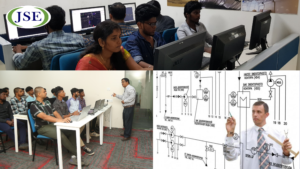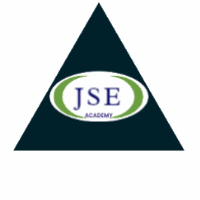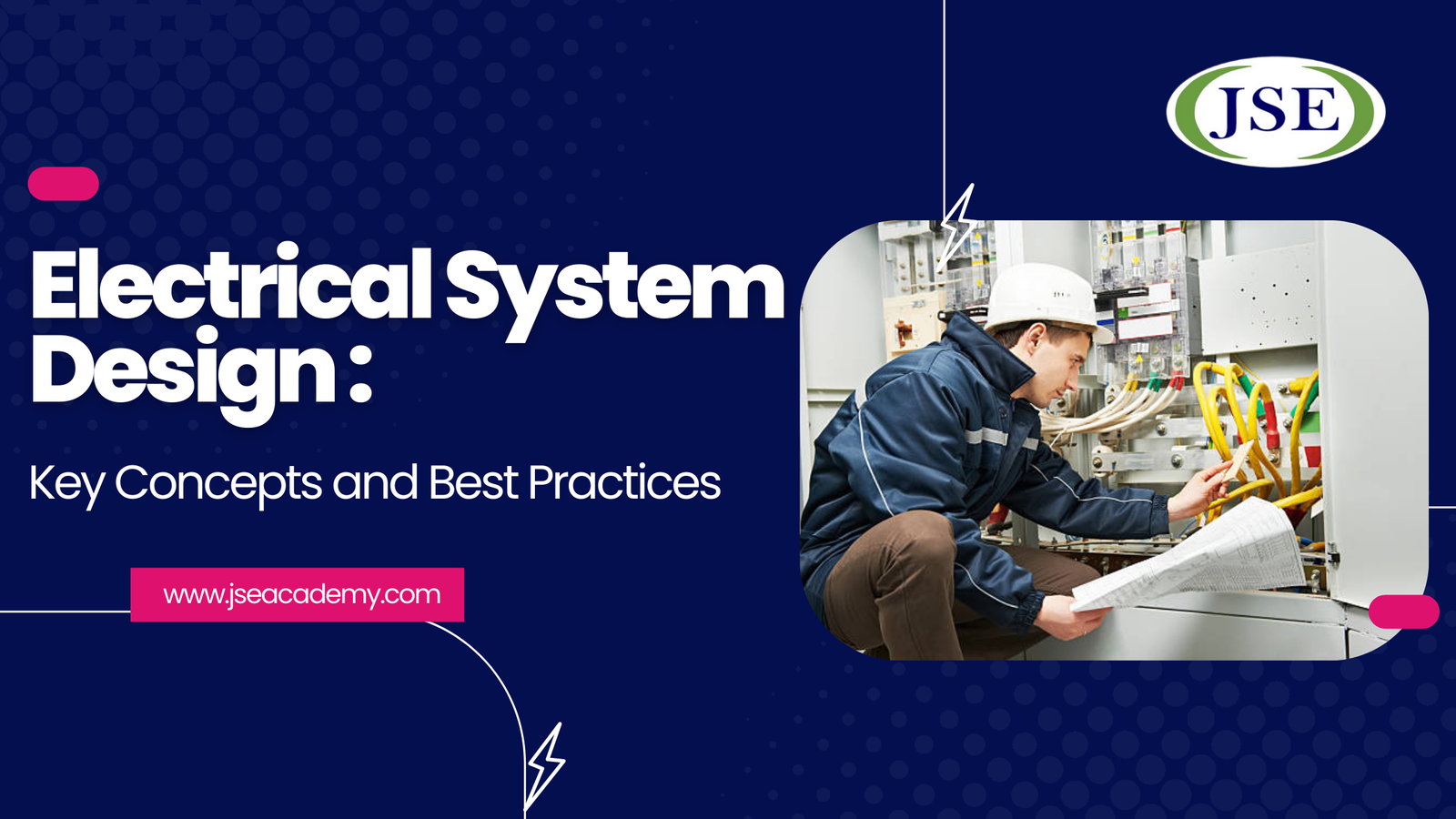When you flip a switch and the lights turn on, or when machines hum to life in a factory, it all comes down to one thing—Electrical System Design (ESD). As future engineers, it’s essential to understand the complexities behind these everyday conveniences. So let’s explore the key concepts and best practices that form the backbone of electrical system design and, more importantly, how you can master these concepts at JSE Engineering Academy.
What is Electrical System Design (ESD)?
Electrical System Design is all about ensuring that power is safely and efficiently distributed in a building or infrastructure. From powering light fixtures to large industrial equipment, the design process involves a series of calculations, planning, and integration with other systems like MEP (Mechanical, Electrical, and Plumbing).

Catch This! As engineers, your role is not only to make things work but to ensure safety and energy efficiency. A well-designed electrical system should meet both functional and regulatory standards while reducing energy consumption.
Key Concepts in Electrical System Design
Load Calculation: Before anything else, you need to understand a building’s power requirements. This involves calculating the total electrical load (measured in watts or kilowatts) based on the number and types of appliances, lighting, and equipment used. Overestimating the load leads to costly installations; underestimating it results in power failures.
Circuit Design: Designing circuits involves selecting the right cables, breakers, and distribution panels. Your goal? Ensure that the current flowing through each circuit is safe and manageable. A well-designed circuit prevents overheating, tripped breakers, and short circuits.
Earthing and Grounding: Grounding is a critical safety measure. It ensures that in case of a fault, excess current is directed safely into the ground, reducing the risk of electric shocks or fires. Understanding grounding is key to any good electrical design.
Power Quality and Harmonics: Modern electrical systems often experience power quality issues like voltage drops or harmonic distortion, especially in industrial environments. As an engineer, you must ensure that your design includes solutions for maintaining stable power, like installing surge protectors or harmonic filters.
Energy Efficiency: Energy-efficient systems are not only environmentally friendly but also cost-effective. Consider using energy-saving technologies like LED lighting, energy-efficient motors, and smart energy management systems when designing. Not only will this reduce the building’s energy consumption, but it’ll also make your designs future-proof.

“Pro Tip! Learning the essentials of electrical system design at JSE Academy doesn’t just teach you how to create safe and effective systems—it trains you to design smarter, greener systems for the future!”
Want to read: What is the scope of doing an MEP course?
Best Practices in Electrical System Design
Adhere to Electrical Codes: Every country or region has its electrical codes (like the NEC in the USA or IEC standards internationally) that ensure safety and performance. Following these standards is non-negotiable in professional design.
Plan for Flexibility: Building usage can change over time, so designing systems that can easily be expanded or modified is a smart move. Think about future-proofing when determining panel sizes or the number of circuits.
Use the Right Software: Tools like Revit MEP, AutoCAD Electrical, and ETAP are essential for modeling, simulation, and analysis. These platforms allow you to visualize your designs, run electrical load simulations, and ensure accuracy.
Safety First: Always prioritize safety. From correct wire sizing to using protective devices like fuses and circuit breakers, ensuring the safety of both the system and its users should be your top priority.
How JSE Academy’s MEP & ESD Courses Help You Excel
At JSE Engineering Academy, we know that mastering electrical system design requires both theoretical understanding and practical skills. That’s why our MEP courses cover everything from basic principles to advanced software training in tools like Revit MEP and AutoCAD Electrical.
Interested to read: What is the difference between AutoCAD and Revit MEP?
Why Enroll?
Here’s what you’ll get from our MEP Electrical System Design (ESD) courses:
- Hands-on Experience: Learn by doing! Work on real-world projects where you’ll design electrical layouts and run simulations.
- Industry-Standard Software: Gain proficiency in Revit MEP, AutoCAD Electrical, and ETAP, giving you a competitive edge in the job market.
- Interactive Learning: Our courses are designed to be engaging and student-focused. Got questions? Our expert instructors are here to help you every step of the way.
Why Choose JSE Academy for Your Engineering Journey?
At JSE Engineering Academy, we believe that learning should be practical, interactive, and future-focused. Whether you’re passionate about electrical systems or any other aspect of MEP, our courses provide the right mix of technical knowledge and hands-on experience.
What Makes Us Different?
- Cutting-Edge Curriculum: Our courses are updated to meet the latest industry standards and technologies.
- Expert Mentorship: Learn from industry professionals with years of field experience.
- Real-World Applications: From day one, you’ll be working on projects that simulate real-world engineering challenges.
Ready to light up your engineering career? At JSE Engineering Academy, you’ll gain the skills and confidence needed to succeed in electrical system design and beyond. Enroll now and take your first step toward a brighter future!

INTRODUCTION TO MEP ENGINEERING: WHAT YOU NEED TO KNOW?
Conclusion: Electrical System Design—The Backbone of Modern Infrastructure
Electrical systems are the lifeblood of modern buildings, powering everything from lights and appliances to complex machinery. As a future engineer, mastering Electrical System Design (ESD) is your gateway to contributing to smarter, safer, and more efficient buildings.
At JSE Engineering Academy, we’re committed to helping you build these skills. Whether through our MEP courses, specialized ESD programs, or industry-focused software training, we’ll prepare you to meet the challenges of tomorrow.
Don’t wait—enroll today, and let’s start building the future together!






